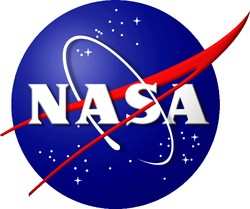Funds Research Into Two-Dimensional Spacecraft, Reprogrammable Microorganisms
NASA has selected 13 proposals through NASA Innovative Advanced Concepts (NIAC), a program that invests in transformative architectures through the development of pioneering technologies.

Among the selected are: a concept for reprogramming microorganisms that could use the Martian environment to recycle and print electronics; a two-dimensional spacecraft with ultra-thin subsystems that may wrap around space debris to enable de-orbiting; and a method of computational imaging that leverages extrasolar intensity fluctuations to detect "echoes" from planets and other structures orbiting a distant star.
NIAC Phase I awards are valued at approximately $100,000 for nine months, to support initial definition and analysis of their concepts. If these basic feasibility studies are successful, awardees can apply for Phase II awards, valued up to $500,000 for two additional years of concept development.
"The latest NIAC selections include a number of concepts for planetary and robotic exploration," said Steve Jurczyk, NASA's associate administrator for the Space Technology Mission Directorate in Washington. "NASA continues to value early stage concept studies for our future missions."
The 2016 portfolio of Phase I concepts cover a wide range of innovations selected for their potential to revolutionize future aerospace missions. Such breakthroughs hold the promise of accelerating NASA's progress toward its goals of exploration beyond low-Earth orbit, missions to an asteroid and Mars, and other priority areas in all of NASA's mission directorates. NIAC partners with forward-thinking scientists, engineers, and citizen inventors from across the nation to help maintain America's leadership in air and space.
The 2016 Phase I concepts are:
- Light Weight Multifunctional Planetary Probe for Extreme Environment Exploration and Locomotion, Javid Bayandor, Virginia Polytechnic Institute and State University in Blacksburg
- Venus Interior Probe Using In-situ Power and Propulsion (VIP-INSPR), Ratnakumar Bugga, NASA's Jet Propulsion Laboratory (JPL) in Pasadena, California
- Project RAMA: Reconstituting Asteroids into Mechanical Automata, Jason Dunn, Made In Space, Inc. in Moffett Field, California
- Molecular Composition Analysis of Distant Targets, Gary Hughes, California Polytechnic State University, San Luis Obispo
- Brane Craft, Siegfried Janson, The Aerospace Corporation in Los Angeles
- Stellar Echo Imaging of Exoplanets, Chris Mann, Nanohmics, Inc. in Austin, Texas
- Mars Molniya Orbit Atmospheric Resource Mining, Robert Mueller, NASA's Kennedy Space Center in Florida
- Journey to the Center of Icy Moons, Masahiro Ono, JPL
- E-Glider: Active Electrostatic Flight for Airless Body Exploration, Marco Quadrelli, JPL
- Urban bio-mining meets printable electronics: end-to-end at destination biological recycling and reprinting, Lynn Rothschild, NASA's Ames Research Center in Moffett Field, California
- Automaton Rover for Extreme Environments, Jonathan Sauder, JPL
- Fusion-Enabled Pluto Orbiter and Lander, Stephanie Thomas, Princeton Satellite Systems, Inc. in Plainsboro Township, New Jersey
- NIMPH - Nano Icy Moons Propellant Harvester, Michael VanWoerkom, ExoTerra Resource, LLC of Littleton, Colorado
"The 2016 NIAC Phase I competition was fierce, as usual. All of the final candidates were outstanding, and limiting the choice to what fit in our budget was difficult," said Jason Derleth, NIAC program executive. "We hope each new study will push boundaries and explore new approaches – that's what makes NIAC unique."
NIAC is funded by NASA's Space Technology Mission Directorate, which innovates, develops, tests, and flies hardware for use in NASA's future missions.
(Source: NASA news release)
 ANN's Daily Aero-Term (12.19.25): Ultrahigh Frequency (UHF)
ANN's Daily Aero-Term (12.19.25): Ultrahigh Frequency (UHF) NTSB Prelim: Cirrus Design Corp SR22T
NTSB Prelim: Cirrus Design Corp SR22T Classic Aero-TV: The Red Tail Project--Carrying the Torch of the Tuskegee Airmen
Classic Aero-TV: The Red Tail Project--Carrying the Torch of the Tuskegee Airmen Aero-News: Quote of the Day (12.19.25)
Aero-News: Quote of the Day (12.19.25) Airborne 12.17.25: Skydiver Hooks Tail, Cooper Rotax Mount, NTSB v NDAA
Airborne 12.17.25: Skydiver Hooks Tail, Cooper Rotax Mount, NTSB v NDAA



